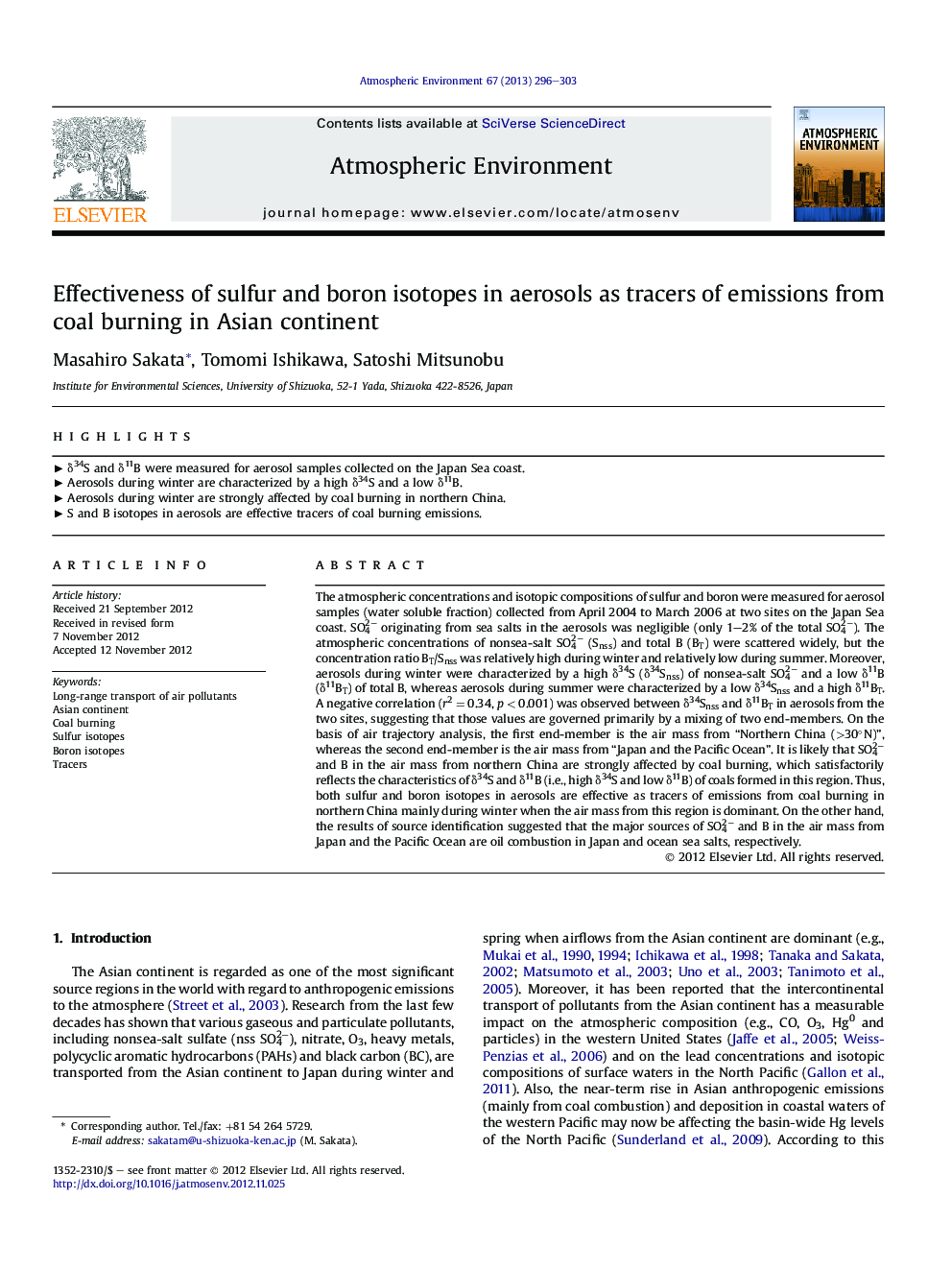| کد مقاله | کد نشریه | سال انتشار | مقاله انگلیسی | نسخه تمام متن |
|---|---|---|---|---|
| 4438499 | 1620404 | 2013 | 8 صفحه PDF | دانلود رایگان |

The atmospheric concentrations and isotopic compositions of sulfur and boron were measured for aerosol samples (water soluble fraction) collected from April 2004 to March 2006 at two sites on the Japan Sea coast. SO42− originating from sea salts in the aerosols was negligible (only 1–2% of the total SO42−). The atmospheric concentrations of nonsea-salt SO42− (Snss) and total B (BT) were scattered widely, but the concentration ratio BT/Snss was relatively high during winter and relatively low during summer. Moreover, aerosols during winter were characterized by a high δ34S (δ34Snss) of nonsea-salt SO42− and a low δ11B (δ11BT) of total B, whereas aerosols during summer were characterized by a low δ34Snss and a high δ11BT. A negative correlation (r2 = 0.34, p < 0.001) was observed between δ34Snss and δ11BT in aerosols from the two sites, suggesting that those values are governed primarily by a mixing of two end-members. On the basis of air trajectory analysis, the first end-member is the air mass from “Northern China (>30°N)”, whereas the second end-member is the air mass from “Japan and the Pacific Ocean”. It is likely that SO42− and B in the air mass from northern China are strongly affected by coal burning, which satisfactorily reflects the characteristics of δ34S and δ11B (i.e., high δ34S and low δ11B) of coals formed in this region. Thus, both sulfur and boron isotopes in aerosols are effective as tracers of emissions from coal burning in northern China mainly during winter when the air mass from this region is dominant. On the other hand, the results of source identification suggested that the major sources of SO42− and B in the air mass from Japan and the Pacific Ocean are oil combustion in Japan and ocean sea salts, respectively.
► δ34S and δ11B were measured for aerosol samples collected on the Japan Sea coast.
► Aerosols during winter are characterized by a high δ34S and a low δ11B.
► Aerosols during winter are strongly affected by coal burning in northern China.
► S and B isotopes in aerosols are effective tracers of coal burning emissions.
Journal: Atmospheric Environment - Volume 67, March 2013, Pages 296–303